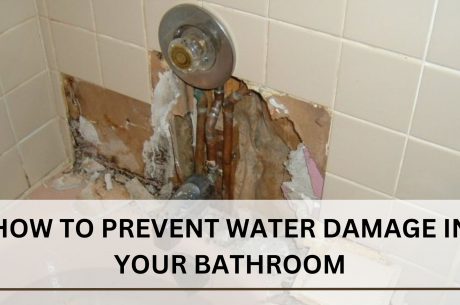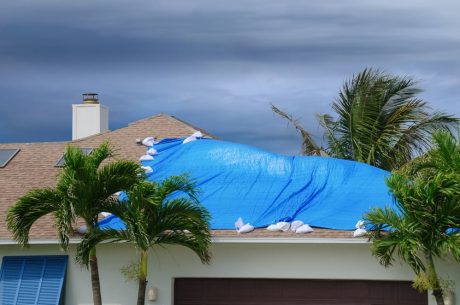Table of Contents
A toilet overflowing is never a welcome sight, but it’s a more common household issue than you might think. From minor clogs to more serious plumbing problems, understanding the root causes of an overflowing toilet can help you prevent messy and costly water damage.
Previously we wrote about how to remove mold from toilet but In this post, we’ll explore the most common reasons toilets overflow, from blockages in the drain to issues with the toilet’s internal mechanisms, and offer tips on how to address them before they become a major problem. Whether you’re dealing with a small overflow or want to avoid future incidents, understanding the potential causes is the first step to a swift solution.
Causes of Toilet Overflow
Here are some common causes of a toilet overflow:
- Clogs in the Toilet
The most frequent cause of toilet overflows is a clog in the drainpipe. This usually happens when items like excessive toilet paper, wipes, or hygiene products are flushed down, causing blockages that restrict water flow. - Blocked Vent Pipe
The vent pipe, which runs from your toilet to the roof, allows air to enter the plumbing system, helping water flow smoothly. If this pipe becomes blocked by debris like leaves or even a bird’s nest, it can slow down drainage and lead to an overflow. - Sewer Line Backups
In some cases, a clog in the main sewer line can cause water to back up into your home, leading to overflowing toilets. Tree roots, debris, or even old, deteriorating pipes can block the sewer line. - Faulty Fill Valve
The fill valve in your toilet tank controls how much water refills after each flush. If this mechanism is malfunctioning or improperly adjusted, the tank may overfill, causing water to overflow into the bowl. - Malfunctioning Float Mechanism
The float mechanism regulates the water level in the tank. If the float is damaged or misaligned, it may cause the tank to fill with too much water, eventually leading to overflow when the bowl can no longer handle the volume. - Worn-Out Flapper
The flapper controls the release of water into the toilet bowl during a flush. If it doesn’t seal properly after a flush, it can allow water to continuously flow, causing the bowl to overflow. - Low Water Pressure
In some cases, low water pressure can prevent the toilet from flushing properly, causing waste and water to remain in the bowl. Over time, this buildup can lead to an overflow, especially after multiple flush attempts.
By recognizing these causes, homeowners can take preventive action to reduce the risk of toilet overflows and avoid potential water damage.
How to fix overflowing toilet
Here’s a step-by-step guide on how to fix an overflowing toilet and prevent further issues:
1. Turn Off the Water Supply
The first step is to stop the flow of water to prevent additional overflow. Locate the shut-off valve, typically found behind the toilet near the floor, and turn it clockwise to stop water from filling the tank.
2. Remove Excess Water
If water has spilled onto the floor, use towels or a mop to clean it up as quickly as possible to avoid water damage. Be sure to wear gloves to protect yourself from contaminated water.
3. Use a Plunger
For simple clogs, a plunger can often resolve the issue. Place the plunger over the toilet drain and push down with a firm, even motion. Create a seal and continue plunging until the water begins to drain properly. Make sure to use a toilet plunger (flange plunger) for better suction.
4. Check the Toilet Tank Components
If plunging doesn’t work, check inside the toilet tank. Inspect the flapper, float, and fill valve to ensure they’re functioning correctly:
Flapper: If it’s stuck or not sealing properly, adjust it or replace it.
Float: Ensure the float is not set too high, which can cause the tank to overfill.
Fill Valve: If the fill valve isn’t shutting off the water, you may need to adjust or replace it.
5. Clear the Drain with a Toilet Auger
For more stubborn clogs, a toilet auger (also known as a plumbing snake) may be necessary. Insert the auger into the toilet drain and crank the handle to push or pull the blockage through the pipe.
6. Check for Blockages in the Vent Pipe
If clogs are frequent and plunging doesn’t help, the issue may lie in the vent pipe. This will likely require a plumber’s help, as the vent pipe is often located on the roof.
7. Call a Plumber
If the clog persists, or if you suspect a deeper issue like a sewer line blockage or vent pipe problem, it’s best to call a professional plumber. A plumber can assess the situation and provide a long-term fix.
Prevent Future Overflows
To prevent future toilet overflows:
- Avoid flushing non-flushable items (wipes, hygiene products, etc.).
- Regularly inspect and maintain your toilet’s internal components.
- Schedule routine plumbing inspections to identify potential issues early on.
- By following these steps, you can resolve most overflowing toilet issues quickly and avoid costly water damage.
A toilet overflow can be a stressful and messy situation, but with the right approach, you can quickly resolve the problem and prevent further damage. Whether it’s a simple clog or a more complex plumbing issue, taking immediate action—such as turning off the water, using a plunger, or checking the toilet’s components—can stop the overflow in its tracks. For persistent or serious issues, it’s best to consult a professional plumber. By understanding the common causes of toilet overflows and taking preventive measures, you can keep your plumbing system running smoothly and avoid future incidents.




 PuroClean Emergency Recovery Services
PuroClean Emergency Recovery Services